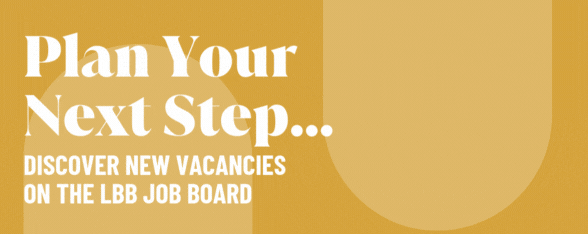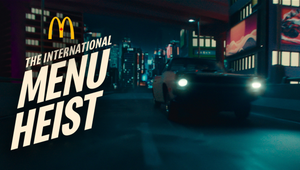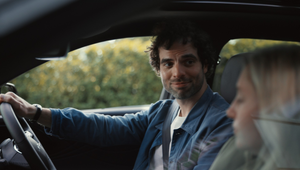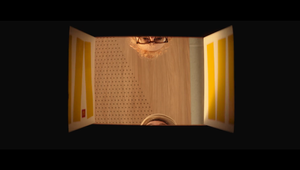
The VFX Factor: The Endless Possibilities on How to Achieve Tasks with Kate Gabriel

Kate Gabriel is a lighting & rendering supervisor on world-class commercials for the likes of Nike, Amazon, BMW, Coca Cola and Formula-E as well as the award-winning promo for the Chemical Brothers - ‘Free Yourself’.
Kate’s recent work includes spots for Winamax ‘Everything for your Mama’, Chevy ‘New Generation for Super Bowl 2022’ and Chilly's ‘A Reusable Way of Living’ as well as a game trailer for Battlefield 2042 ‘What A Time to Be Alive’ and ‘Wild Hearts’ Cinematic Trailer for EA.
In addition to her professional work, Kate has been actively involved in the VFX industry, chairing the London ACM SIGGRAPH Chapter for over five years and hosting various industry events. Though no longer an officer, she remains a board member of the chapter.
LBB> What’s the biggest misconception people have about VFX?
Kate> People sometimes think that VFX is easy to do. In reality, it requires lots of skills, knowledge and years of training. There are many different disciplines and artists in a chain of pipeline, working on one shot. Each of those artists are specialists using different types of software. There are of course generalists which can use more than one type of software but even those couldn’t master every single task. It’s important to consider that before you start making a schedule for your project and make sure you have enough time for post.
LBB> There are two ends to the VFX spectrum - the invisible post and the big, glossy 'VFX heavy' shots. What are the challenges that come with each of those?
Kate> There are certainly challenges in both. When you are working on a live action sequence, where you have “invisible VFX” you need to make sure that nobody can spot them. They need to look as realistic as possible and integrate well into your shots. In terms of scope of the work that could be from a set extension where the entire street is being extended, crowd in the background cheering or effects such as dust particles, breath coming out of the actor’s mouth.
Another example, less cheerful, but lets say something breaks accidentally on set, which was in all previous shots. And for the continuity you need that asset, but you can’t get it physically anymore. What we can do in CG is to recreate that asset and integrate into the following shots, or equally remove it from the previous ones.
When you have a full CG or very heavy FX sequence, one of the biggest challenges is in my opinion the style. Is your show going to be realistic or stylised? Are you aiming for something brand new and unique, that nobody hasn’t come up with yet? Sometimes teams of artists spend lots of time researching and developing, making tests before they find the right look for the show. Very important aspect is the time, if you don’t have enough time for VFX, try to find other achievable solutions, otherwise you might end up with something rushed which drives the viewers attention from the story.
LBB> As a VFX person, what should directors be aware of to make sure you do the best possible job for them?
Kate> If you know that your show will require VFX, it is important that you involve a VFX supervisor or CG lead in early discussions of the project. It's always about good planning. Do the previsualisation of your shots in advance of the shoot. Discuss every detail with your DOP and VFX supervisor. What equipment, lenses you have in mind and planning to use. It's also good to have references of other projects which were already done and discuss what would you like to achieve. Sometimes you find out that there is a much cheaper solution to certain things practically rather than recreating everything in CG. These discussions can help to save you some budget and ensure the shots with VFX will look great. Once you are on set, everybody is on the same page and knows what to do. We are there to help you to tell your story and we want to deliver the best work possible.
LBB> VFX is a true craft in the classic sense of the word. Where did you learn your craft?
Kate> I’m a self-taught 3D artist. I’ve got a master’s degree in interior design, so it's completely different to VFX. I enjoyed studying design, but I was always more curious about 3D software from the moment I opened one. It became my hobby (and it still is, to this day). I love to open a fresh new scene and start to create. When you are given a specific task there’s always endless possibilities on how to achieve it. You are constantly learning and problem-solving creative tasks which I really enjoy.
LBB> Think about the very, very start of a project. What is your process for that? Do you have a similar starting point for all projects?
Kate> The beginning of the projects are my favourite. Everything starts with a new story. When you read the script or see a creative deck for the first time, all ideas are coming together and start shaping in your head. In the CG world everything is possible, therefore communication with directors, producers and artists from your team is key. In live action projects, it is important to plan things carefully, especially before the shoot. The goal is to ensure that everything is achievable in the given time and budget. Similar in full CG projects, early planning is very important. Finding the right style, making sure that everyone is happy with the direction. Problem solving any issues, develop new tools and don’t be afraid to experiment. It’s all about collaboration, openness to feedback, looking at the project from a different perspective and finding the right method. That way you know your project will be successful.
LBB> We imagine that one of the trickiest things with VFX is, time issues aside, deciding when a project is finished! How do you navigate that?
Kate> That’s true, you can keep going and going, tweaking your shots forever but it’s good to step back sometimes, maybe ask your colleagues for a second opinion or someone from the team who hasn’t seen the work before. You don’t necessarily want to get caught in a loop of tweaking details which no one will notice.
LBB> Is there a piece of technology or software that's particularly exciting you in VFX? Why?
Kate> My favourite software is Side FX’s Houdini. This software is like an open canvas you can create anything out of your imagination plus the team of developers behind it are very supportive and listen to the users. Believe me there’s a big fan group and I’m part of it. Apart from Houdini there are some other incredible software pushing boundaries. For example, Unreal for real time and virtual production or Nuke for compositing. Other technologies such as motion capture, LiDAR scanning and photogrammetry. AI is also being slowly adopted in our industry which could be a big help in some areas of VFX. All those are playing a big part of the VFX world.
LBB> And as real time tech and games engines become ever faster and more sophisticated, how do you see that shaping or changing the role of VFX and its place in the production pipeline (e.g. thinking about things like virtual production)?
Kate> Virtual production is an exciting one which brings the post production into the process of production. It’s amazing for everyone on set to be in the final environment with no weather restrictions. That can help talent to do better performances.
There are no secrets though, it requires good preparation, organisation and as mentioned many times before, time. Not every project is suitable for virtual production. You still have to do lots of work upfront of the shoot. Most of the assets are created the traditional way before transferring them into the software like Unreal and projecting them onto the volume stage. You will need specialists who operate the software on set with you ready to make any “real time” changes. Sometimes the environment itself could be a combination of real footage with digital matte painting enhancements or it could be built fully in CG.
LBB> VFX is a craft that relies on you really looking at nature - how light works, how gravity works, the mannerisms of a kind of creature, how crowds work, skeletons, explosions… whether it's animation or compositing or anything else… So how do you like to approach the research side of your job? What’s the most random or intriguing thing you’ve learned from working on a project?
Kate> Every project brings something new to learn. The beauty of advertising is the variety of projects. I usually research for examples from reality, before going experimental. If you are working in an environment, you sometimes catch yourself observing trees or vegetation and watching how the leaves move. If you’re working on a car commercial, you find yourself looking at cars and how the light reacts to their coating. When working on creatures you learn about anatomy, how the body movement behaves, or fur moves when they move. There’s so many things you learn, from where the branding goes on racing cars to how anatomically different an eye of a cat is.
LBB> When you’re watching a VFX-heavy ad or movie, what are the tells that you look for to figure out how well crafted it is?
Kate> I personally try to not think about it and enjoy the story, before I start analysing how certain effects could have been done. Sometimes you only find out later at talks or presentations about the particular project. Most of the time it’s the team of artists who are not afraid of experimenting with something new and finding new ways to help visually with the storytelling.
LBB> How did you first get into the industry? What was your very first job in the industry and what were the biggest lessons that you learned at that time?
Kate> If I could give one advice to anyone who’s starting - always follow your passion. Do what you really enjoy doing and makes you happy. As mentioned before, I'm a self-taught 3D artist. I was studying interior design at my University and experimenting with 3D in my spare time. In my third year I was lucky to take part in the Erasmus work experience programme, which didn’t restrict me only to my field of study. I went to Iceland, where I worked as a junior 3D Lighter on a stereoscopic feature film called ‘Legends of Valhalla - Thor’. This was an amazing experience and introduction in the industry. The team was incredibly talented, and I learned a lot from them. After that, I was freelancing in 3D while studying and once I finished my master’s degree, I moved to London. I worked in film, TV and advertising, which I enjoy the most.
LBB> What was your first creative milestone in the industry – the project you worked on that you were super proud of?
Kate> There are a few projects I am proud of working on in my career. The Chemical Brothers music video ‘Free Yourself’, where we had to make hundreds of CG robots running through a warehouse.
Watchmen TV show, where we created a full CG transformation of the moon to a habitable planet. Everything in that sequence was growing, moving, water rising and flowers blossoming. It was a great technical and creative challenge.
I also must include my recent project - Wild Hearts game trailer for EA, which just won an AICP (Association of Independent Commercial Producers) award in the game cinematic category. We had such an amazing team of artists literally from all around the globe. It’s been an incredible experience, this project involved so many disciplines, from Motion capture, virtual camera capture, building four seasons of different environments, animation of the gigantic creatures, sculpting, groom, feathers, cloth CFX, FX, lighting, compositing until the final grade.
LBB> From a VFX perspective, which ads have you seen recently that you've been particularly fond of and why?
Kate> The commercial I recently really liked was ‘Coca-Cola Masterpiece’, directed by Henry Scholfield. The combination of different techniques and styles, and using new technologies such as AI, all pushes the creative boundaries.















